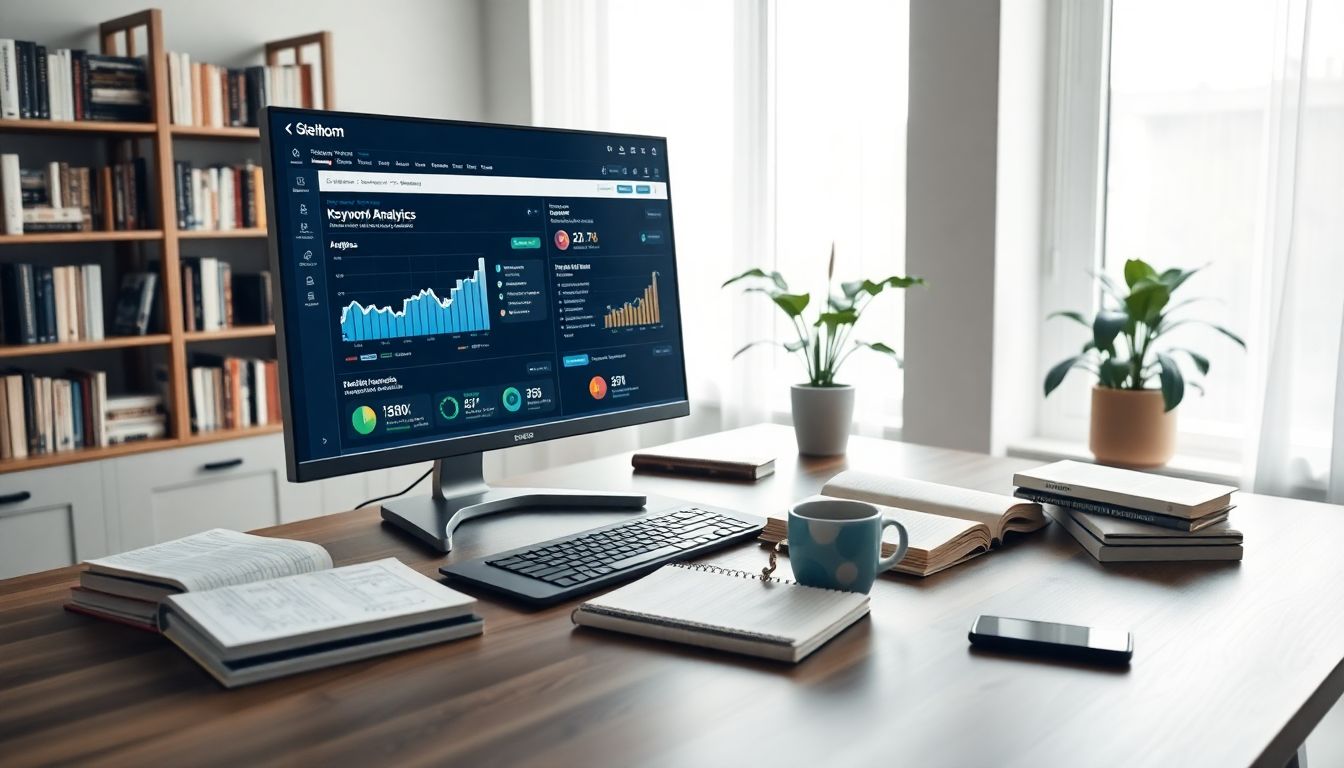
Mastering SEO On-Page Optimization from Home: Boost Your Digital Presence Remotely
The way businesses grow online is changing fast—and more people than ever are working from home. Knowing how to do SEO on your website can take your home business or freelance projects to the next level. It’s a smart move, especially if you want better search rankings and more visitors without spending a fortune. The good news? You can master on-page SEO right from your own space with the right skills and tools. It’s accessible, affordable, and highly effective.
Understanding On-Page SEO and Its Significance
What is On-Page SEO?
On-page SEO means all the steps you take directly on your website to make it easier for search engines like Google to understand and rank your pages. It covers things like keywords, content quality, page structure, and metadata. Think of it as setting up your shop so visitors find exactly what they need. Unlike off-page SEO—which focuses on backlinks and social shares—on-page SEO makes up the core of your website’s visibility.
Why On-Page SEO Matters for Home-based Businesses
When you optimize your site properly, you boost your chances of showing up in local searches and even global queries. Imagine a small craft shop that appears on the first page of Google every time someone searches for “handmade jewelry.” That’s the power of on-page SEO. Plus, investing time here often results in better return on investment, turning visitors into customers consistently.
Current Trends and Data
Recent stats show that up to 93% of online experiences start with a search engine. Plus, Google updates its algorithms regularly, meaning your on-page tactics need to adapt. Staying current with SEO trends ensures your site remains competitive. If your website isn’t mobile-friendly or loads slowly, you’ll lose visitors—and rankings—fast.
Fundamental On-Page Optimization Techniques
Keyword Research and Intent
Start with keywords. Use tools like Google Keyword Planner or SEMrush to find words your target audience uses. Don’t just pick popular terms—think about what people want. Are they looking for how-to guides or quick answers? Match your keywords with their intent, whether they want info, products, or services. This way, your content answers their real questions.
Optimizing Title Tags and Meta Descriptions
Your page titles need to be clear, compelling, and include your main keywords. For example, “Affordable Web Design Services for Small Businesses” is better than just “Web Design.” Meta descriptions should briefly summarize your page while inviting clicks. Think of it as your online storefront window—make it inviting!
URL Structure and Site Architecture
Create URLs that are simple and descriptive. Instead of www.yourwebsite.com/page1, prefer www.yourwebsite.com/seo-work-from-home. Keep your site organized with logical categories and internal links. This helps both users and search engines navigate your content easily.
Content Optimization Strategies
Creating High-Quality, Relevant Content
Content is king in SEO. Write useful, original posts that truly help your visitors. Balance keywords naturally without stuffing. Include images, videos, or infographics to make your pages engaging. Well-crafted content keeps visitors on your site longer and encourages sharing.
Using Headers and Formatting for SEO
Break your content into sections with headers like H1, H2, and H3. Use keywords in these headers when relevant. This not only improves readability but also helps search engines understand the main topics of your page. Short paragraphs and bullet points make your content easier to scan.
Implementing Schema Markup and Structured Data
Structured data, like schema markup, adds extra info to your pages. This can help your site appear with rich snippets—like star ratings, prices, or event info—directly in search results. Think of it as adding a label that makes your listing stand out.
Technical SEO for Remote Work Setups
Ensuring Mobile-Friendliness and Page Speed
Most searches happen on mobile devices. Use Google’s Mobile-Friendly Test to see if your site adapts well to smartphones. Next, check your site speed with Google PageSpeed Insights. A slow website turns visitors away. Clear large images, reduce scripts, and pick a reliable hosting provider.
Secure and Accessible Websites
Switch to HTTPS to protect your visitors’ data. Accessibility matters too—use alt text for images and ensure your site can be navigated by everyone, including those with disabilities. These efforts also boost your SEO.
Fixing Common On-Page Technical Issues
Scan your site regularly for duplicate content, broken links, or crawl errors with tools like Screaming Frog. Fix these issues quickly to keep your site healthy and search engine friendly. Regular audits save headaches down the line.
Tracking, Analytics, and Continuous Improvement
Setting Up SEO Metrics and Goals
Define what success looks like. Are you aiming for higher rankings, more visitors, or increased sales? Use Google Analytics and Search Console to track progress. Set goals for each KPI to keep your efforts focused.
Analyzing Data and Making Adjustments
Review your data often—see what’s working and what isn’t. Maybe certain keywords perform better or your bounce rate is high on some pages. Use A/B testing to refine titles, content formats, or page layouts. Small tweaks can lead to big results.
Keeping Up with SEO Trends and Algorithm Updates
SEO is always changing. Follow trusted blogs, join online forums, and subscribe to updates from industry leaders. Being aware of new features or algorithm tweaks helps you adjust quickly. Staying informed makes you an SEO pro even while working from home.
